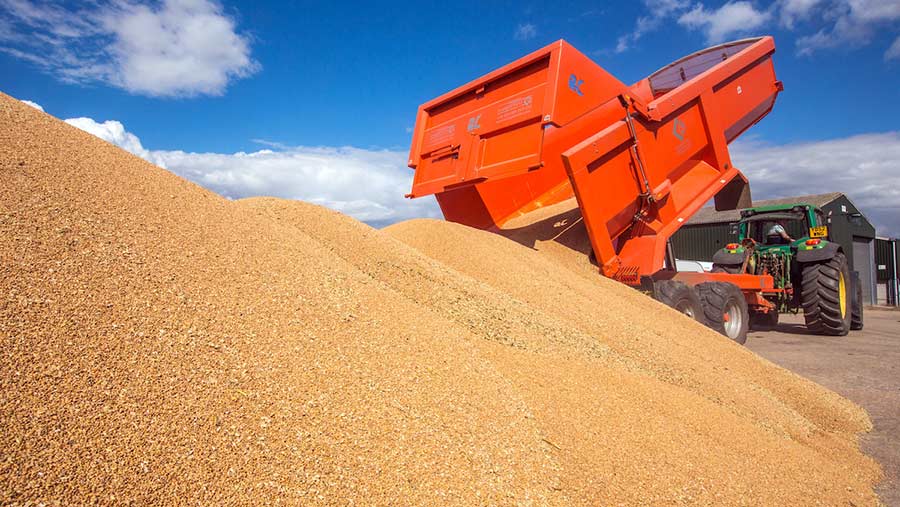Grain trade turns nervous on weather market
 © Tim Scrivener
© Tim Scrivener Grains have moved into a weather market, making for a nervous trading period in the run up to the new crop year.
Dry weather and tight old crop supplies pushed up UK ex-farm feed wheat prices by just over £1/t over the week to Wednesday (19 April).
This was despite the announcement the previous day of a UK general election on 8 June, which pushed sterling to its highest level against the US dollar and the euro since December.
See also: Virtual Farm modelling shows harvest 2017 brings better outlook
Spot feed wheat values averaged £144.70/t ex-farm midweek and ranged from £138/t-£150/t.
However, the abundance of breadmaking quality wheat meant that prices for this category stood still, while spot feed barley put on just 40p/t to average £121.20/t.
While the increases are not large, they continue a rising price trend and are important given the background of stronger sterling and the fact that UK wheat is uncompetitive on export markets.
The rise in values illustrates concern over the availability of home-grown feed wheat until the end of the cereal year and over the impact of prolonged dry weather on crops in Western Europe, chiefly in France, Spain and parts of the UK and Western Germany.
In addition, this week has seen sharp frosts in some areas where crops are relatively forward after favourable conditions in February and March.
Grain market drivers
- Market likely to be more volatile in next few weeks on weather and crop news
- Global end of season wheat and maize stocks forecast at record levels but UK wheat stocks and French barley stocks relatively low
- Lower Canadian and US wheat plantings but higher Canadian and Australian rapeseed likely
- Concern over US maize planting progress after heavy rain, also for spring wheat planting progress
- UK uncompetitive on export markets but tight supplies mean more wheat imports likely in run up to new crop supply becoming available
Political uncertainty has also added to the mix which is likely to lead to increased volatility over the next few weeks.
All of this was the perfect recipe for short-term price rallies, said analyst Benjamin Bodart of CRM.
“It’s a long time since we have seen such weather-related turbulence as well as political events.
“The unexpected call by Teresa May for a UK general election means we have seen the pound’s value increase significantly, we have French elections, German and UK elections,” said Mr Bodart, referring also to wider global instability following US action in Syria and speculation over North Korea.
Record stocks
At the same time and acting as brake on price rises, there will be record global grain stocks at the end of the current season.
This and a favourable overall grain and corn production outlook over the past few weeks has led speculators, mainly in US grain futures, to hold record short (sold) positions in wheat and corn for this point in the season.
Weather news could prompt them to cover these short positions by buying futures contracts, which could push prices higher.
UK new crop wheat for harvest was priced at £130/t-£132/t ex-farm midweek but Mr Bodart thought that new crop markets had not yet priced in the extent of the many risks.
One of these was the unknown extent to which Canadian and Australian growers might switch spring acreage into oilseed rape rather than wheat.
In February the UK was a net importer of wheat for the third month in a row, following 14 consecutive months of net exports, noted AHDB Cereals and oilseeds this week after the release of HMRC figures. The season so far (July – February) has seen UK exports of wheat total 1.26m tonnes, while imports have reached 1.13m tonnes.
